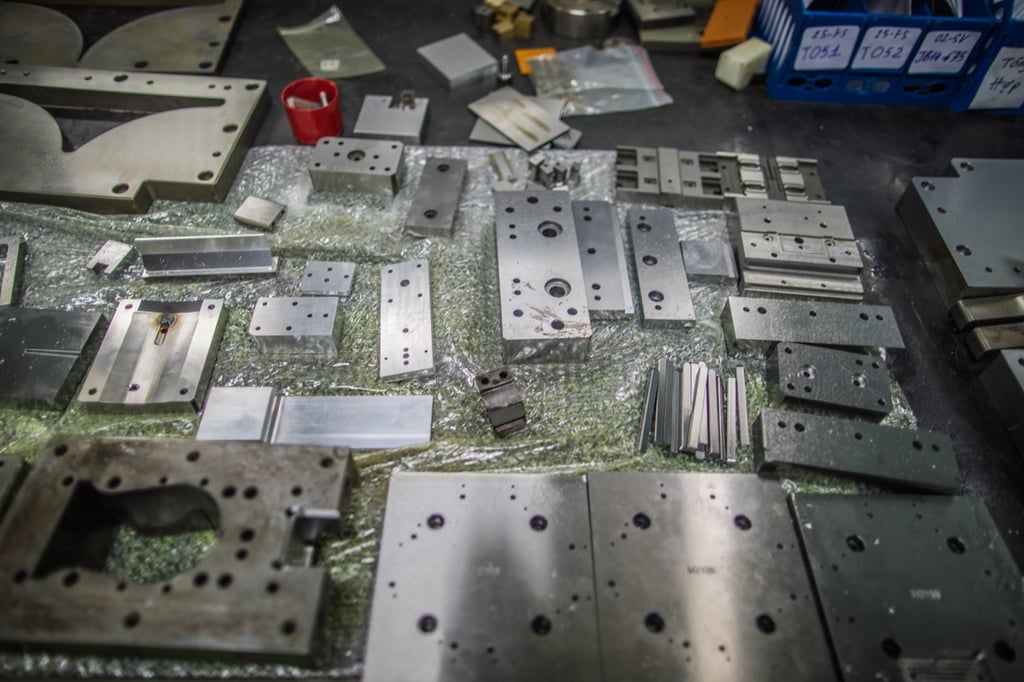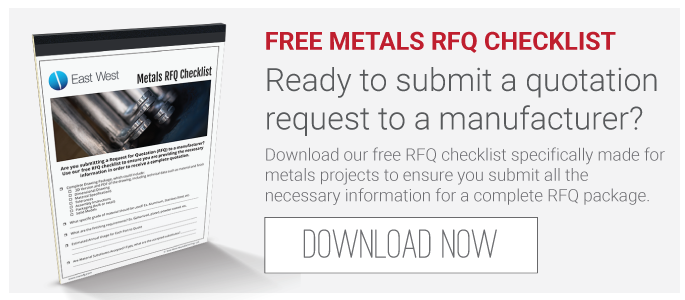Relationships are tricky things. When they're good it's usually because each party has something the other needs, it's a mutually beneficial. That's true when you're looking for manufacturing suppliers, too. You're looking for a good fit. You win, they win.

Building relationships takes time, and information. And that means you have to ask questions. We've compiled a list of eight questions to ask a prospective metal manufacturing partner, but one question to answer from the get-go is “How many?”
Volume is a critical variable when deciding on the manufacturing process. Capital expenses such as dies are more cost-effective if the volume of the product is high. If you only need 1,000 pieces, you’re probably not going to build a die — it would be a huge expense for a small return. When volume is closer to 10,000 to 15,000 pieces, dies make more sense.
Once you have the volume nailed down, the next step is to determine what manufacturing process is best for your application. Here are some metal fabrication capabilities you should expect from an experienced contract manufacturer (CM).
- Stamping: These range from turret and laser machines combined with press brakes for small volumes and simple geometry, to highly automated machines with progressive dies for high volume and complex forming. Stamping supports a wide range of part shapes, sizes and volumes.
- Die Casting: This is the metal equivalent of plastic injection molding. In die casting, metal billets are liquified and injected into a metal die, then cooled and ejected from the tool. There are several other types of casting that use liquid metal and molds/dies including sand casting and investment casting.
- Machining: Parts that are machined start with a billet of metal, then formed by cutting away material in a subtractive fashion. Machines to do this type of work include lathes and mills — including Computer Numerical Controls (CNC) machines which are a highly automated form of metal manufacturing. In CNC, the part’s mechanical dimensions are defined using CAD software which is translated into directions by computer-aided manufacturing (CAM) software.
- Forging: This process has been around a very long time. Forging involves heating a billet of material, then manually pounding it into the shape you want it to be.
Many of these processes are used in conjunction with each other. For example, you might use die casting to mold a part to a basic shape, then use CNC machining to cut features that require a higher level of precision — such as threaded holes. You could also join two parts created by different means into one assembly.
Metal fabrication often requires finishing to provide the part with a surface texture that is more pleasing to the eye. Some examples of finishing processes include:
- Tumbling
- Sand blasting
- Anodizing
- Plating
- Powder coating
8 Questions to Ask Your Prospective Metal Manufacturing Partner
1. Do you have the capabilities to make my components?
For example, what type of equipment does your facility have and what are the limitations of the equipment? Will you subcontract some processes or inspections? Where will that happen, and will you monitor each step? Potential suppliers should be able to provide a machine list, as well as examples of typical parts they manufacture, as well as unique capabilities they may have to differentiate themselves from other similar manufacturers.
2. Do you have engineering expertise in that manufacturing process?
Many designs have features that are not easily manufactured; an engineer on our staff calls them “hidden factories.” During the manufacturing process, if you have to remove a part, orient it one way, then re-orient to cut another feature, then re-orient it again, it will be difficult to manufacture this part accurately. That’s a lot of manual involvement. What if a design change could eliminate a lot of that effort? It’s still the same part — performs the same way and has the same function, but it costs less — and that's money that goes right to your bottom line.
*Your contract manufacturer needs to have qualified engineers that can look over your part for Design Failure Mode and Effect Analysis (DFMEA). It’s important because it shows how much you might struggle on the back end.
3. What industries do you support with the metal fabrication you do?
If your CM does a lot of medical, automotive or aerospace work, that’s a good sign that they have experience with high precision metal work. If the manufacturer you're investigating supports those demanding industries, you can be pretty sure they know their stuff. One of the benefits of using CM is that, by definition, they work with customers in different industries. Chances are they have seen your problem, or something similar, and can draw on those experiences to broker a solution from another industry, reducing risk on your end.
4. If you work with those high-precision industries aren’t you too expensive for my part or product?
Even if they work with high precision industries, they may also provide work for consumable or commodity type products. Look for a CM that can support both — a product for every purse and purpose.
5. Which material is best for my project?
You think you know which material is best, don’t you? But it’s important to remember that different supply chains do things differently. This is especially the case when manufacturing offshore. Raw material and technical specifications can vary from country to country; your 1020 carbon steel may not be available in China; the closest alternative would be Q235 steel in China. While most metals can be closely matched, there's a chance that chemical properties may differ slightly.
Before talking with your prospective partner, review international metal equivalents and plan to adapt to your new supply chain. Find a manufacturer with strategic sourcing expertise, and you should have no problem meeting your original spec.
6. Which manufacturing process is best for my project?
This is where volume will come in. The scope of the project will direct the process whether that’s casting, machining, forging, stamping, etc. You also need to know about sub-processing — finishing, treatments, plating, etc. Will that be done at the same facility? Find out where all the work on your project is being done so that you can accurately assess risks associated with a third party.
7. Can you comply with necessary regulations?
From product safety to material compliance, metal parts face a host of regulations such as the Dodd-Frank Act/Conflict Minerals Policy. It’s essential that you partner with a supplier with experience in these critical issues. Cutting corners is not an option.
An example: A supplier can claim to make your product RoHS-compliant, but without proper knowledge of the intricacies of this regulation, you could find yourself in a tight spot. Let's take zinc-plated (galvanized) steel, for instance. Per RoHS, a trivalent chromate conversion coating is compliant, while a hexavalent chromate is toxic and non-compliant. Simply proving that the raw materials are acceptable is not sufficient in this case since the process (rather than the raw materials themselves) can send you into non-compliant territory. Therefore, parts must be tested post-production to ensure compliance. This is the level of knowledge and attention to detail you need in your metal supplier.
8. When can I come to visit?
Learn as much as possible about your supplier, from company history to product array to financials. If you're considering going offshore, finding a competent, trustworthy contract manufacturer is even more crucial. Meet any sub-suppliers as well. Forging deep relationships is the best approach. Ask about planning a visit and touring the facilities. Establish a clear communication path to the support you'll need — this should include direct access to management, as well as technical support.
You're after as much relevant information you can get to make a well-informed decision. Armed with answers to these questions and others, you'll have the information you need to identify a contract manufacturer with the skill and experience to get your metal project off the ground.
Read more:




.jpg?width=176&height=56&name=MR_associatedNetwork_logo%20(1).jpg)